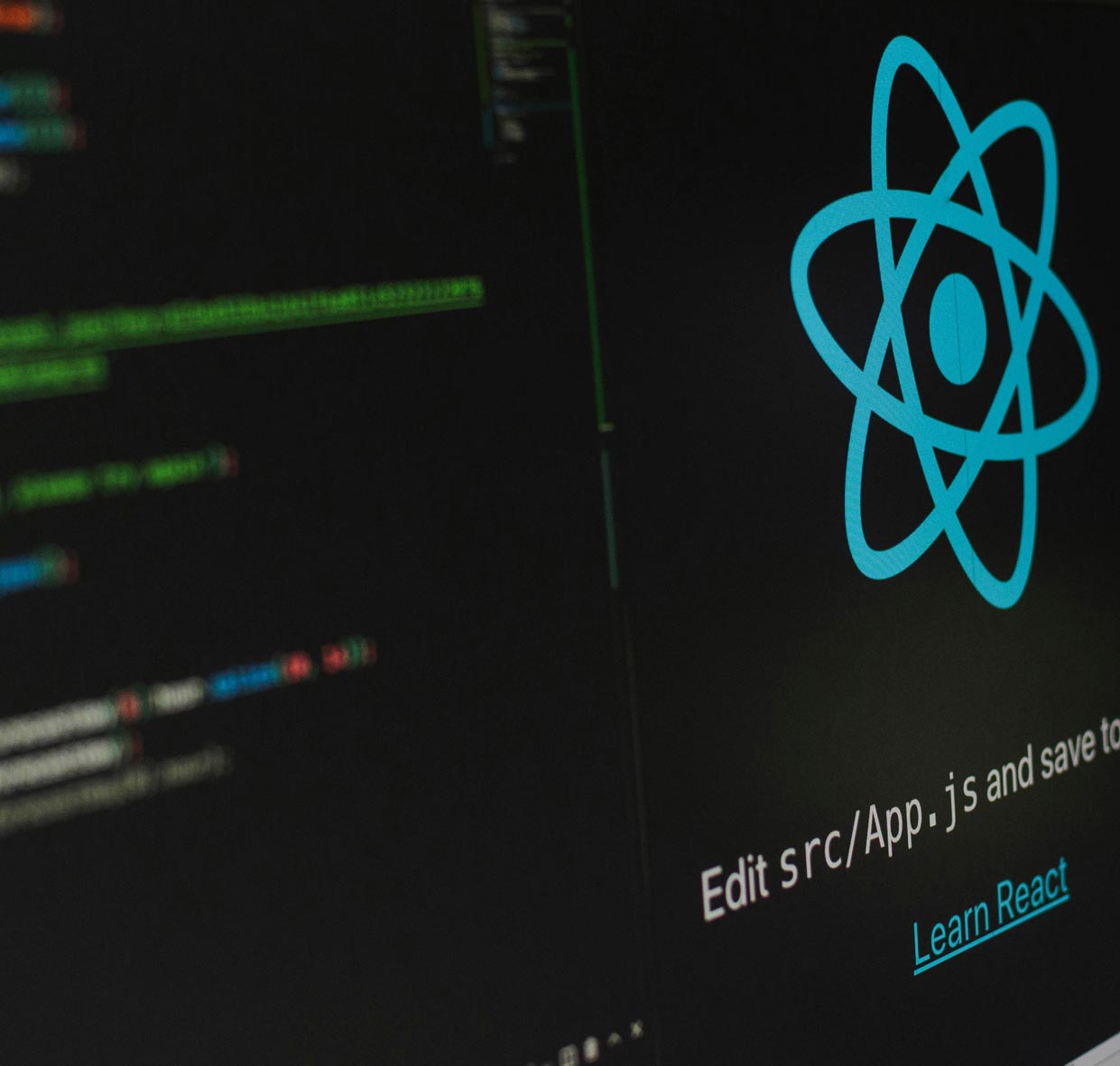Is React Native or Swift the better choice for mobile app development? The answer isn’t linear because the two options have different purposes. React Native has more popularity for being a cross-platform development framework, whereas the Swift language is used for native development.
Statista shows that React Native is used by 35% of mobile app developers around the world, primarily focusing on cross-platform mobile apps. Statista also shows that 4.7% of developers use the Swift language, mainly focusing on the most used language preferences worldwide.
Discover what makes each choice a better option for a specific mobile app project before determining which one will suit the development of your mobile apps.
What Is React Native?
React Native is a cross-platform framework for iOS and Android applications. The JavaScript framework owned by Meta (formerly Facebook) accelerates mobile development with the JavaScript libraries called React. Developers can write apps for different platforms choosing React Native. The framework infuses the efficiency of developing web apps with a mobile application development process.
React Native Key Features
React Native uses JavaScript for creating apps. However, understanding React Native and its key features can help clients determine whether the framework will suit their mobile app development project. Here are some features and advantages of the more familiar framework to consider:
- Developing apps with React Native promotes the use of modular UI with code reusability
- The modular structure of the code also allows flexibility, scalability, and coordination improvements
- React Native’s hot reloading feature allows developers to see and change real-time code
- The framework uses a declarative JSX syntax to define an intuitive and dynamic user interface
- Over-the-air (OTA) updates allow developers to install updates without a separate process
- Develop mobile apps for the Apple App Store and Google Play Store simultaneously
- Integration simplicity, lower development costs, and a shorter development time are benefits of React Native’s multi-platform development
React Native Challenges
React Native has some setbacks, including maturity issues, dependency on a native language, licencing and patent limitations, loosely-typed code, and a structure unsuitable for the implementation of multiple resources. Know when to choose React Native vs. Swift.
When to Choose React Native
- For cross-platform applications that provide a similar user experience on iOS and Android
- To reduce the development time and costs for budget-friendly app development
- Access to large, reusable components libraries will boost the product’s features and functionality
- The app development process requires active community support with tons of documentation
- The program’s functionality must suit that of a web development project when building apps
- A project quickly requires a developer’s availability with JavaScript knowledge for visual effects
What Is Swift?
Apple created Swift, a native programming language used by Swift developers to develop Swift apps for Apple devices while using the platform’s capabilities that exceed multi-platforms development regarding the native feel. Swift focuses on developing high-performance apps for constant growth using a native environment to streamline interactions between the app and native components.
Swift Key Features
Swift excels in the native feel of user experiences when creating iOS Swift apps. The Apple ecosystem is ideal for native iOS applications with seamless native component integration. Here are more features and advantages of the Swift programming language:
- Swift-based developers can integrate the language with Objective-C for interoperable apps
- The modern syntax is an improvement over Objective-C, allowing a cleaner, more readable code
- The automatic memory management automatically manages memory usage and deactivates memory units no longer in use
- Swift package manager allows skilled developers to distribute code and manage dependencies
- Swift has a comprehensive built-in library that reduces the need to use third-party libraries
- The open-source programming language results in secure and high-performing Swift for iOS apps
- Swift offers the ability to build a native app with functional programming features and multi-paradigm support
Swift Challenges
Swift development has some setbacks, including the fact that the language is relatively new and has a smaller community, a limited developer’s availability due to the higher learning curve, and compatibility issues that prevent Swift applications from being backward compatible.
When to Choose Swift
- For graphics-intensive native iOS development using Apple’s ecosystem like games
- To develop a Swift app with iOS features that integrates perfectly with native components
- For native applications on multiple Apple platforms, including the Apple Watch and Apple TV
- To create applications with native APIs to ensure seamless performance on all iOS platforms
- For developing native iOS apps on Apple devices with advanced features and functionalities
- To create a native app with native modules while using developers proficient in third-party plugins and how native offers new features for smooth animations
Comparing React Native vs. Swift for Mobile App Development
Let’s compare React Native and Swift comprehensively to understand which provides better performance, a faster development time, and enhanced user interfaces. You’ll know when to use React Native and Swift by the end of our comparison.
Community Support
React Native vs. Swift community support shows that the former has a wide range of communities, and with extensive documentation, React Native has an excellent support base. Meanwhile, Swift has active community support with excellent documentation but falls short of the older JavaScript framework for Android and iOS app development. React is a clear winner for community support.
Development Speed
The development speed of React Native is faster because developers can create apps for Android and iOS with a single codebase to speed up the development life cycle. The hot reloading tool also speeds up development by allowing programmers to see real-time changes without recompiling the code.
On the other hand, Swift is an iOS app-specific language that may require additional tools to design Android versions of mobile apps with similar features and functionalities. The code reuse ability of an engineer makes React the best option when the requirements need a shorter development life cycle.
Performance Analysis
React Native relies on a JavaScript language and can’t match the native performance of a Swift application on Apple devices. Swift provides optimal performance with the additions of type inference and automatic memory usage to reduce errors and maintain code stability in native apps.
The high-performance Swift development choice offers stable code with lower CPU consumption or CPU usage. Still, React Native has good performance with improved GPU speed and memory usage. The two apps will collide in performance bottlenecks, but the choice depends on project requirements.
Cross-Platform Capabilities
React Native apps are designed for both iOS and Android app development to streamline the development process and shorten the time to market for a single app on multiple platforms. Multi-platform development is only possible with React Native, not native development.
Instead, Swift is used to write native code in iOS development. Native apps cost more, require additional expertise, and take longer to code. Still, native iOS app development using Swift results in an iOS app with excellent performance, stable code, and a native experience for end users.
UI Components
React Native works with multiple operating systems and provides consistent user interfaces on various devices. One good example is that an engineer can inject multiple UI components, even into existing apps, to ensure users always have a feature-rich and intuitive user interface.
Meanwhile, Swift app development may be the winner for complex user interfaces on native devices that require smooth animations. Swift has a package called SwiftUI, which allows a developer to create enhanced user interfaces with complex features and graphics designed for native iOS apps.
Code Reusability
Code reusability is one of React Native’s leading benefits because fewer resources are used to complete projects when using the same code on many applications. JavaScript code reuse allows a developer to infuse multiple technologies into a single codebase for various projects.
However, the creation of native code in the React Native vs. Swift for iOS platform debate is undeniably in favour of using Swift code base projects for more stability in the future. A team will use Swift code over the loosely typed React Native code and technology for a more critical solution on an iPhone.
Programming Languages
Apple developed the Swift language for native apps on iOS platforms, allowing a developer to launch an idea for mobile apps using an actual programming language. Swift allows developers to incorporate elements from various languages for mobile, web, and Mac desktop apps in many cases.
React Native relies on JavaScript to target interested users, startups, companies, and customers. The framework also extends to React JS for web developers building apps on Windows desktops. Statista suggests that React Native uses JavaScript, a better programming language preferred by 62.3% of developers around the world.
Development Ecosystem
Swift uses the Apple ecosystem, capable of developing applications on mobile, web, and desktop. The huge ecosystem allows for constant updates to prevent errors in a program or file. The XCode templates or Apple environment benefits the development of high-performance and graphics-heavy apps like games.
Still, building iOS and Android apps with React Native vs. Swift allows a developer to access multiple tools, templates, and frameworks for the JavaScript language. For instance, developers use WebStorm for debugging or JavaScript Thread or Frame Rate for improved business logic.
Hot Reloading vs. Compilation
One advantage React Native has over Swift is the hot reloading feature. Developers can monitor real-time code changes during and after app development using the feature without disrupting the Android or iOS device functions for end users or companies.
Meanwhile, the dedicated Swift iOS app compilation or compiled programming language is preferred for in-depth debugging, code readability, stability, and supporting elements from multiple other languages like Python or Java. React Native and Swift have an advantage and a disadvantage in their key features.
App Store Deployment
Developers must know the cross-platform specific features required to deploy mobile applications on Google and Apple App Store, meeting the stricter user interface guidelines UI-G of Apple platforms for iOS apps. React Native also requires developers to follow the UI-G for iOS apps.
Ultimately, the biggest difference between the storefront deployment of native apps versus multi-platform apps is the cost. Both iOS and Android stores will charge monthly fees. Creating a single platform app with React Native will cost less in the Google Play Store.
Creating iOS Apps or Android Applications With Pulsion
Decide whether creating native iOS apps or cross-platform development suits your budget, project requirements, and expected timelines. You have an overview of the differences and understand the advantages of both iOS and Android app development for a business. Focus on which factors suit you.
Ultimately, save time and money when you talk to our digital strategy consultants about React Native app development versus using our Swift app development company services. We’ve written code for clients worldwide and have been in the business for nearly 30 years.
We don’t make a client hope for success. Instead, we adapt to your business goals to ensure success, learning exactly what you need. We use the latest technologies and gather data essential to choosing the best choice between Swift and React Native.
Swift vs. React is a crucial debate when using an experienced team with the latest technology to deliver the right tool to your market. Reach out to a community that supports every idea, shares your vision, and shows you Swift vs. React compared data to give you peace of mind about which you choose.
Hire Swift developers to create a concrete future on native platforms, or hire React developers for fast and efficient development on various platforms. Contact us today to discuss the tools that your business wishes to provide customers so that we can help you achieve successful completion.
React Native vs. Swift Compared: Conclusion
The Facebook-owned React Native and Swift from Apple are two app development frameworks that require more developers to use JS libraries or XCode to design, test, and deploy efficient iOS and Android apps. Either one works for an iOS application, but only one works for all platforms.
Various features make each a good choice. For instance, XCode is a comprehensive development environment from Apple’s ecosystem while React Native can access multiple JS libraries. Let us help you decide which is the best choice for your goals. Contact us today to talk about the options.
React Native vs. Swift FAQs
Is React Native or Swift better for mobile apps?
Swift and React Native work for mobile applications. React Native for building iOS and Android apps is the best choice if the business goals require multiple platform deployments with one code base. However, Swift is the better choice if businesses need internal APIs, code stability, and native experiences on iOS devices like iPhones, WatchOS, and TvOS.
How does the learning curve differ between React Native and Swift?
Swift is a newer language that requires more effort and a higher learning curve to master the language that also incorporates other language elements from Python. Meanwhile, React Native has direct access to extensive documentation from JavaScript’s React framework, which means developers have an easier learning curve.
What makes React Native better than Swift?
React Native and Swift have different purposes. Still, React Native beats Swift hands-down if creating mobile applications for iOS and Android devices simultaneously. The multi-platform capabilities using React Native and React components can conserve organisations money and time by launching a single app on other platforms while targeting iOS or Android.
















